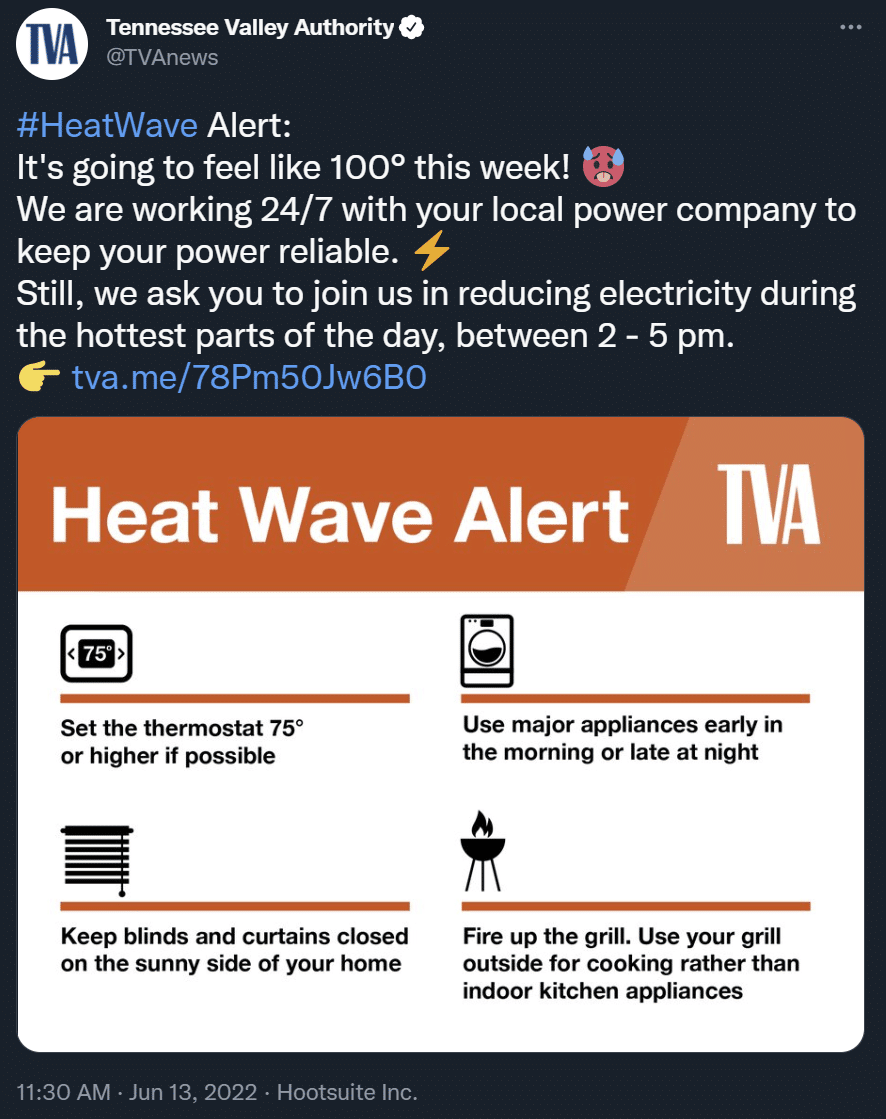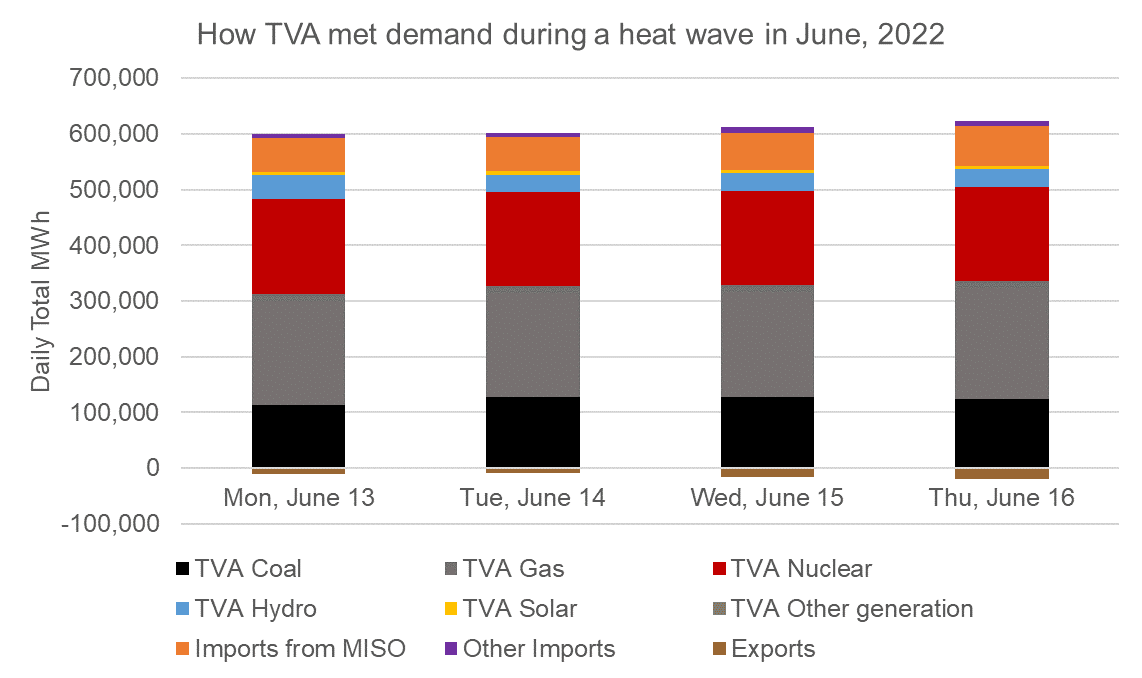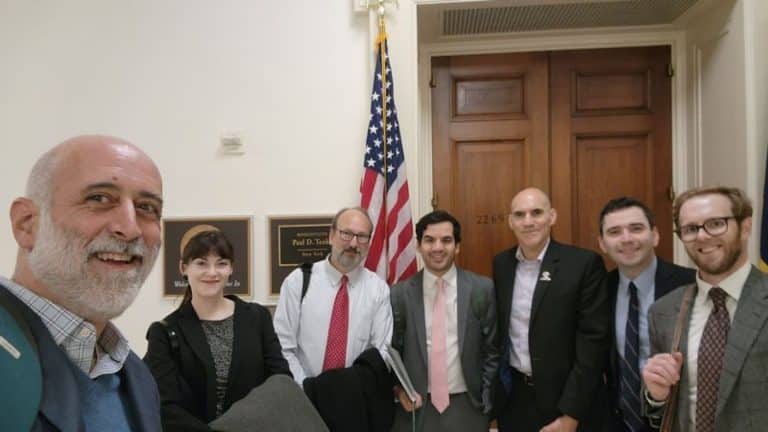Memphis Light, Gas, and Water (MLGW), the municipal utility that serves the Memphis area and is the largest customer of the Tennessee Valley Authority (TVA), continues to explore the possibility of leaving TVA to join the Midcontinent Independent System Operator (MISO). As a member of MISO, MLGW would be able to transact on one of the largest electric wholesale markets in the world, where utilities from Louisiana through Manitoba are connected and able to share resources to lower costs and keep the electricity flowing.
Throughout MLGW’s exploration of alternative power supplies, TVA has used reliability as a scare tactic to try to keep its biggest customer. In fact, several of MLGW’s business customers seem to think that without TVA, MLGW won’t be able to keep the lights on. But TVA has not been open about the fact that it relies on imports from MISO regularly, particularly during times when the grid is strained.
Without MISO, there’s a good chance TVA couldn’t keep the lights on in Memphis. Yet TVA continues to lead people in Memphis to believe joining MISO would threaten reliability. We wanted to set the record straight before MLGW makes a recommendation to its Board this Thursday, September 1, 2022, on whether to join MISO or stay with TVA.
In 2021 TVA imports from MISO were equivalent to 8% of TVA’s total demand, and so far in 2022 TVA’s imports from MISO have been 11% of TVA’s demand. It’s fair to say that TVA relies on MISO, and in fact, since MLGW is 9-10% of TVA’s total load, TVA’s imports from MISO have been roughly the amount of total power TVA supplies to MLGW in recent years.
The U.S. Energy Information Administration, which is a part of the Department of Energy, tracks electricity imports and exports as reported by each balancing authority down to the hour and posts it on the Grid Monitor dashboard. TVA and MISO are both balancing authorities. If MLGW leaves TVA and joins MISO, then MISO will serve as MLGW’s balancing authority. Balancing authorities maintain electricity supply and demand for their territory and meet reliability regulations set by the North American Reliability Corporation. MLGW customers won’t notice a difference in reliability if MLGW switches from TVA’s balancing authority to MISO.

So let’s look at a week where TVA’s grid was strained. Earlier this year, starting Monday, June 13, 2022, TVA asked customers to conserve their electricity usage by turning thermostats to higher temperatures and even grilling outside instead of using indoor ovens and stoves. The region was experiencing a heat wave, and TVA’s reserves were tight. Where did TVA turn? Its neighbor, MISO.
On June 13-16, while TVA was at risk of a serious reliability event, its imports from MISO were about 11% of its total load. On average over those four days, TVA was importing 2,690 MW of power per hour. While MLGW’s load was likely higher for those days for reference, the annual average of MLGW’s retail sales is approximately 1,500 MW of power per hour.
TVA doesn’t publish its hourly reserves in real time the way market operators like MISO do, so we can’t say for certain if TVA would have had enough of its own generation on hand to avoid blackouts if TVA had not been able to import from MISO during those days.
Even taking into account that TVA still had exports to its neighbors to the North, South, and East, TVA still imported enough power to cover 10% of its demand from MISO during this June heat wave. In fact, during each of these days, MISO imports (net of exports) provided more power than TVA’s own hydro and solar generation combined. (MISO’s contribution to meet TVA demand is shown in orange in the chart below.)

This data from EIA makes it clear that TVA’s misinformation about how MLGW joining MISO would impact reliability is a scare tactic and nothing more. TVA relies on MISO to provide power throughout the year, but particularly when TVA’s grid is in jeopardy. It is disingenuous for TVA to lead the people of Memphis to think reliability would suffer because it joined MISO, while TVA relies on MISO to maintain its own current level of reliability.
Take Action
We’ll continue to monitor and intervene on MLGW’s forthcoming decision about whether or not to stay with or leave TVA. If you’d like to stay involved in our campaign and education efforts, please sign the Memphis Has the Power petition.
Memphis Has the Power is a campaign to ensure Memphians have affordable, equitable, and clean energy. The campaign has worked in the Memphis community for several years, backstopped by the Southern Alliance for Clean Energy (SACE). Our work has lifted up Memphians who struggle with unaffordable energy bills and has helped result in large increases in funding to help Memphians with lower incomes reduce their energy bills. SACE is an appointed member of MLGW’s Power Supply Advisory Team, the community advisory team that helped shape MLGW’s integrated resource plan.



